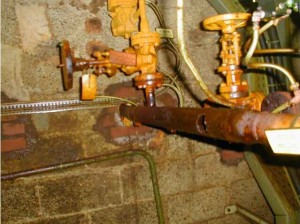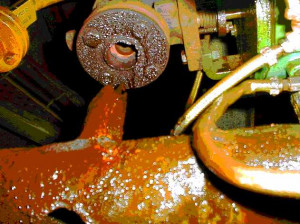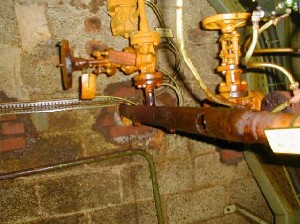During the re-start phase of an electrolysis workshop in a chemical plant, chlorine (Cl2) gas leaked from a pipeline in a confined chlorine liquefaction unit. The operators shutdown the facilities and evacuated the premises. The internal emergency plan of the site was triggered and lifted after 1 hour and 30 minutes. According to the operator, out of the hundreds of kg of Cl2 emitted in the building, only 3 kg were released into the atmosphere thanks to the dynamic confinement system that opened into a neutralisation tower. The Cl2 detectors indicated the 5 ppm threshold was crossed for 20 seconds at the boundaries of the site and for 20 min near the workshop. No environmental or human (including both staff and civil population) consequences were reported. The leak linked to the missing of a few dozen meters of pipeline (pipeline carrying residual chlorine from a gas/liquid separator to a liquid bleach manufacturing plant) is responsible for the accident. This absence was due to the combustion of the pipeline steel by chlorine, which in turn according to the operator was caused by the presence of hydrogen (H2) in the pipeline due to lack of monitoring. The H2 concentration in residual chlorine that must be below the LEL (4.6 %) was manually controlled by the rate of evaporation of chlorine in the gas/liquid separator and monitored through analysis. During the accident, the technician failed to take any action to reduce the increasing H2 concentration in the pipeline that reached 6.7%, crossing the LEL. To bring down the concentration, the evaporation rate of chlorine was increased causing thus a rise in the residual chlorine flow rate that probably provided the low energy needed to start combustion. The flame stabilised near a valve and a flow meter caused the combustion of iron / chlorine when the temperature reached 130 °C. To reduce the chances of reoccurrence of such an accident, the operator decided to increase monitoring of the H2 concentration and shutdown the electrolysis workshop when the H2 concentration crosses 3.5 % in residual chlorine. Furthermore this concentration was guaranteed by continuously performing the material balance of pure chlorine.
Download the detailed report in .pdf format (499 Kb)






